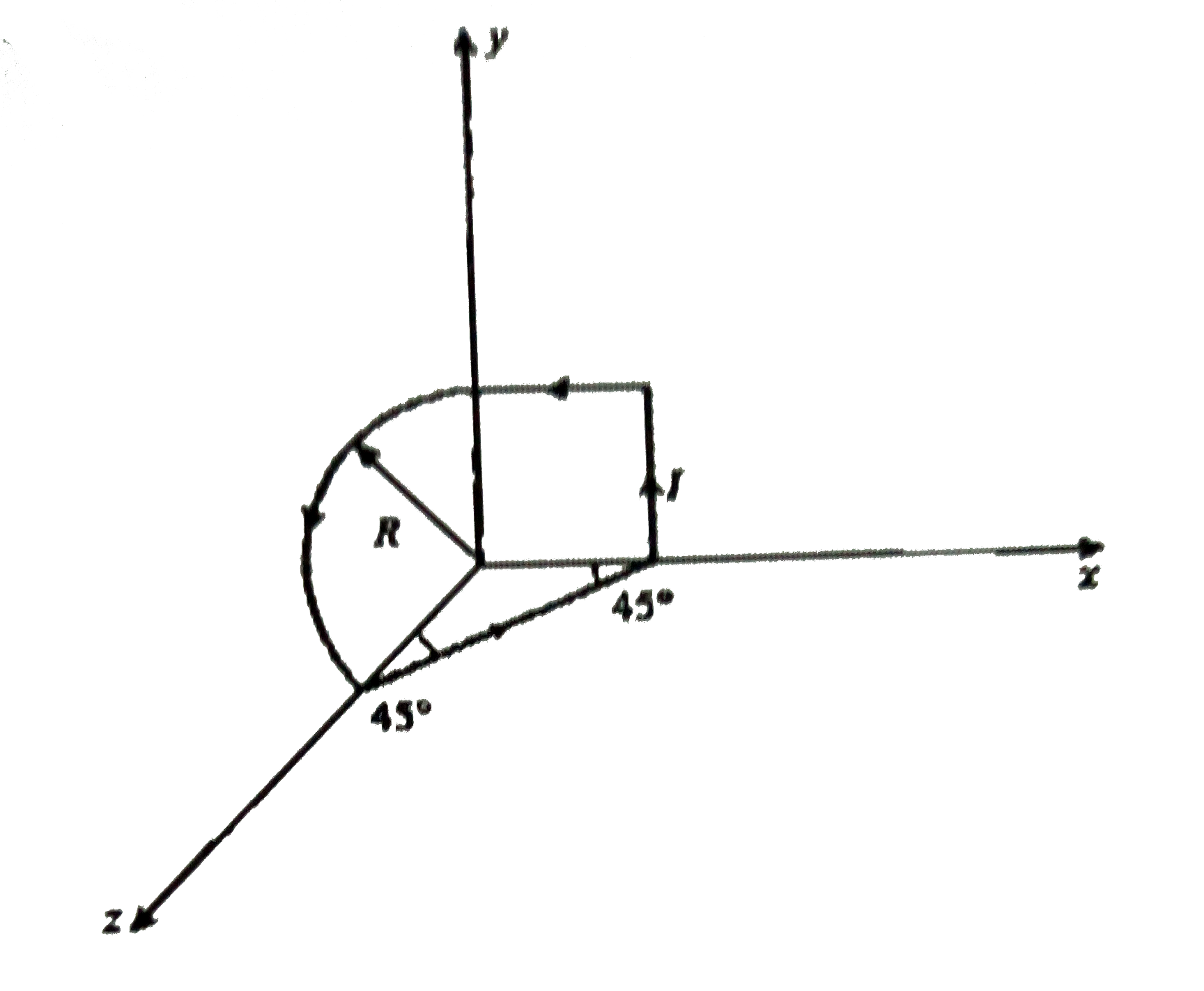An infinite current carrying wire passes through point O and is perpendicular to the plane containing a current carrying loop ABCD as shown in figure. Choose the correct option(s).

Net force on the loop is zero
Net torque on the loop is zero
As seen from O the loop rotates clockwise
As seen from O the loop rotates anticlockwise
The correct Answer is:A,C
Field due to loop will be || to current is conductor so force by loop on conductor is zero In turns force of conductor on loop is also zero
Force on AB=0,CD=0,FBCˆk,FDA(−ˆk) Net force will be zero as seen from O loop will rotate clockwise
 .
.
Similar Questions
Knowledge Check
- Question 1 - Select One
An infinite current carrying wire passes through point O and is perpendicular to the plane containing a current carrying loop ABCD as shown in figure. Choose the correct option(s).
 ANet force on the loop is zeroBNet torque on the loop is zeroCAs seen from O the loop rotates clockwiseDAs seen from O the loop rotates anticlockwise
ANet force on the loop is zeroBNet torque on the loop is zeroCAs seen from O the loop rotates clockwiseDAs seen from O the loop rotates anticlockwise - Question 2 - Select One or More
An infinitely longg wire is placed near a square loop as shown in figure. Choose the correct options.
 Athe mutul inductance betweenthe two is μ0a2πln(2)Bthe mutual inductance between the two is μ02πln(2)Cif a constasnt current is passed in the straight wire in upward direction and loop is brought close to the wire then induced current in the loop is clockwiseDin the above conditions, induced current in the loop is anti clockwise
Athe mutul inductance betweenthe two is μ0a2πln(2)Bthe mutual inductance between the two is μ02πln(2)Cif a constasnt current is passed in the straight wire in upward direction and loop is brought close to the wire then induced current in the loop is clockwiseDin the above conditions, induced current in the loop is anti clockwise - Question 3 - Select One
The magnetic moment of the current carrying loop shown in the figure is equal to
 Al(b2+2ab)θ2BlabθCl(a2+ba)θ2DNone of the above
Al(b2+2ab)θ2BlabθCl(a2+ba)θ2DNone of the above
Two perpendicular infinite wires are carrying current i as shown in the figure. The magnetic field at point P is :
 View Solution
View SolutionThe figure shows an infinitely long current wire out of the plane of the paper ( shown as a dot '⊙'). A current carrying loop ABCD is placed as shown in figure. The loop
 View Solution
View SolutionABCDE is a very long wire carrying current i1 as shown. The portion BCD is a semicircle with centre at O. Another very long wire passes through point O, perpendicular to the plane of ABCDE and it carries current i2 outside the plane of paper. The two wires
 View Solution
View SolutionA current carrying rod AB is palace perpendicular to an infinitely long current carrying wire as shown in figure. The point at which the conductor should be hinged so that it will not rotte (AC=CB)
 View Solution
View SolutionA current carrying squre loop is placed near an infinitely long current carrying wire as shown in figure . The loop torque acting on the loop is
 View Solution
View Solution



